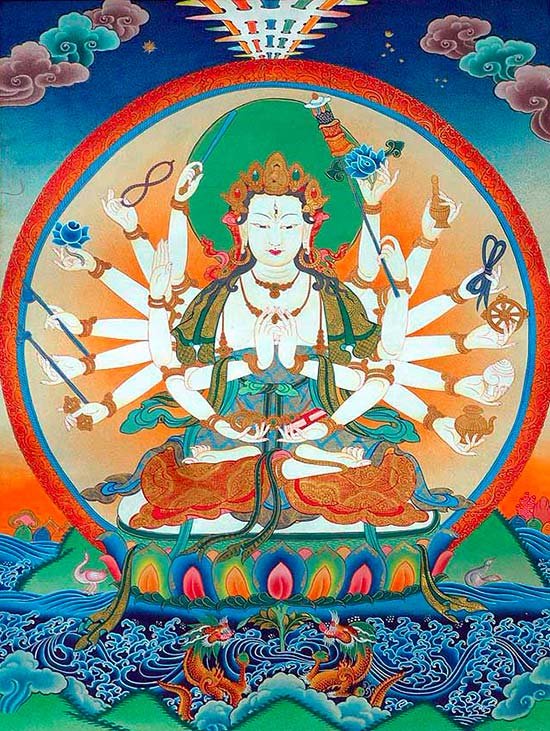Maha Prajnaparamita Sastra
by Gelongma Karma Migme Chödrön | 2001 | 941,039 words
This page describes “the teaching of the abhidharma” as written by Nagarjuna in his Maha-prajnaparamita-sastra (lit. “the treatise on the great virtue of wisdom”) in the 2nd century. This book, written in five volumes, represents an encyclopedia on Buddhism as well as a commentary on the Pancavimsatisahasrika Prajnaparamita.
2. The teaching of the Abhidharma
What does the teaching of the Abhidharma mean? Sometimes the Buddha himself defined the meaning of the dharmas [that he was teaching], sometimes he was content to give their names (nāman) and his disciples explained the meaning by all kinds of descriptions. Thus, the Buddha said: “If a bhikṣu is unable to correctly understand conditioned dharmas (saṃskṛtadhamra) and if he wants to obtain the supreme worldly dharmas (laukikāgradharma), that will be impossible for him. If he has not obtained the supreme worldly dharmas and he wants to enter into the perfect state (samyaktva), that will be impossible for him. If he has not entered into the perfect state and he wants to become a srotaāpanna, a sakṛdāgamin, an anāgamin or an arhat, that will be impossible for him. On the other hand, if a bhikṣu understands correctly conditioned dharmas, he will have the possibility of obtaining the supreme worldly dharmas; if he has obtained the supreme worldly dharmas, he will enter into the perfect state; if he enters into the perfect state, he will certainly have the possibility of becoming srotaāpanna, sakṛdāgamin, anāgamin, or arhat.” (see Appendix on laukikāgradharma) This is the direct statement of the Buddha; but he did not define the characteristics (lakṣaṇa) and the meaning (artha) of these supreme worldly dharmas. To say what world (dhātu) they belong to, what is their cause (hetu), their object (ālambana) and their fruit of retribution (vipākaphala); to make known, apart from these supreme worldly dharmas, the various practices (carita) of the śrāvaka up to his reaching nirvāṇa without residue (nirupādhiśeṣanirvāṇa); to analyze one by one the characteristics and meaning of the dharmas is what is called the Teaching of the Abhidharma.
